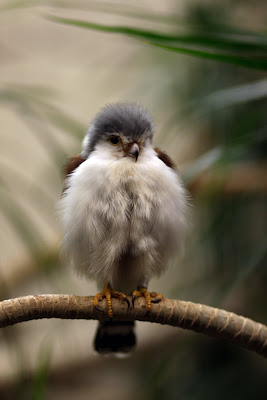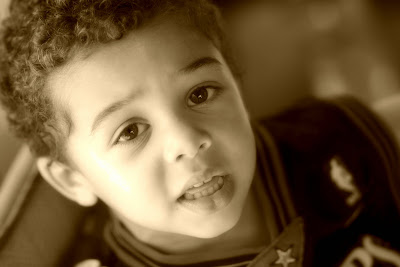
Taking your camera off "auto pilot" and doing some of the legwork can be a bit intimidating at first. Like I said before, a good digital photography book will explain all that you need to know if you're a little unsure of yourself. Or just simply experiment with your camera-it is digital-there's no film processing costs! Aperture, shutter, focus-these aren't nearly as hard to learn to adjust manually as it may seem, I promise! After all, I managed to teach myself these concepts, and have gone on to become a serious amateur photographer, even getting paid for some of my work!
The short answer, & especially in tough conditions, first set the f-stop & shutter speed you need. Then adjust the ISO.
Shooting in Manual. I mentioned that there may be 6 or more combinations of Aperture and Shutter Speed that give us a good exposure. In auto, the camera arbitrarily selects one of these combinations and that's what you get. This is why we want to shoot in manual. You know what you're trying to achieve when you depress the shutter, the camera does not. Ok. Ready. Turn that dial to M. Check your ISO. Change it if you need to. Bring the viewfinder up to your eye. Still looks the same right. Except for the meter. What is the meter telling you? Underexposed? Try a lower f/stop to let in more light or a slower speed to give the light more time to get in. This is where you start learning to shoot in manual. Remember that there are a few different combinations of settings that will turn out a good exposure. Try a few. See how different f/stops affect the photo. You may notice the meter change as you zoom in or out. Most consumer level lenses have a range for the largest aperture (small number) that changes with the focal length. You can look this up on your own. Just know that zooming in my change your exposure and require you to make an adjustment. Some cameras may have only one adjustment dial and require you to depress a button while turning that dial to adjust one of the settings. It will take a little time and you will forget some things at first. Stick with it. You will see a difference in your photos in the end.
The short answer, & especially in tough conditions, first set the f-stop & shutter speed you need. Then adjust the ISO.
Shooting in Manual. I mentioned that there may be 6 or more combinations of Aperture and Shutter Speed that give us a good exposure. In auto, the camera arbitrarily selects one of these combinations and that's what you get. This is why we want to shoot in manual. You know what you're trying to achieve when you depress the shutter, the camera does not. Ok. Ready. Turn that dial to M. Check your ISO. Change it if you need to. Bring the viewfinder up to your eye. Still looks the same right. Except for the meter. What is the meter telling you? Underexposed? Try a lower f/stop to let in more light or a slower speed to give the light more time to get in. This is where you start learning to shoot in manual. Remember that there are a few different combinations of settings that will turn out a good exposure. Try a few. See how different f/stops affect the photo. You may notice the meter change as you zoom in or out. Most consumer level lenses have a range for the largest aperture (small number) that changes with the focal length. You can look this up on your own. Just know that zooming in my change your exposure and require you to make an adjustment. Some cameras may have only one adjustment dial and require you to depress a button while turning that dial to adjust one of the settings. It will take a little time and you will forget some things at first. Stick with it. You will see a difference in your photos in the end.



 (This picture was shot with an 85mm at f/1.8) You can see how ALL of the focus is on the bird and the background is completely blurried out.
(This picture was shot with an 85mm at f/1.8) You can see how ALL of the focus is on the bird and the background is completely blurried out. (This picture was taken with an 85mm at f/2.20) You see the background is slightly blurry and all the focus is on handsome LJ.
(This picture was taken with an 85mm at f/2.20) You see the background is slightly blurry and all the focus is on handsome LJ.










 Macro Mode
Macro Mode This is the pollen from inside the flower above ( Maco photography is very detailed)
This is the pollen from inside the flower above ( Maco photography is very detailed) Look at this picture: Do you see how the camera is focused on my son and the background is blurry.
Look at this picture: Do you see how the camera is focused on my son and the background is blurry. In this picture everything is
In this picture everything is  In this picture the girl is going for a shot and her jump was caught in the mid-air.
In this picture the girl is going for a shot and her jump was caught in the mid-air. Mine of course at first was my son! I now enjoy shooting babies, families and weddings!
Mine of course at first was my son! I now enjoy shooting babies, families and weddings!
